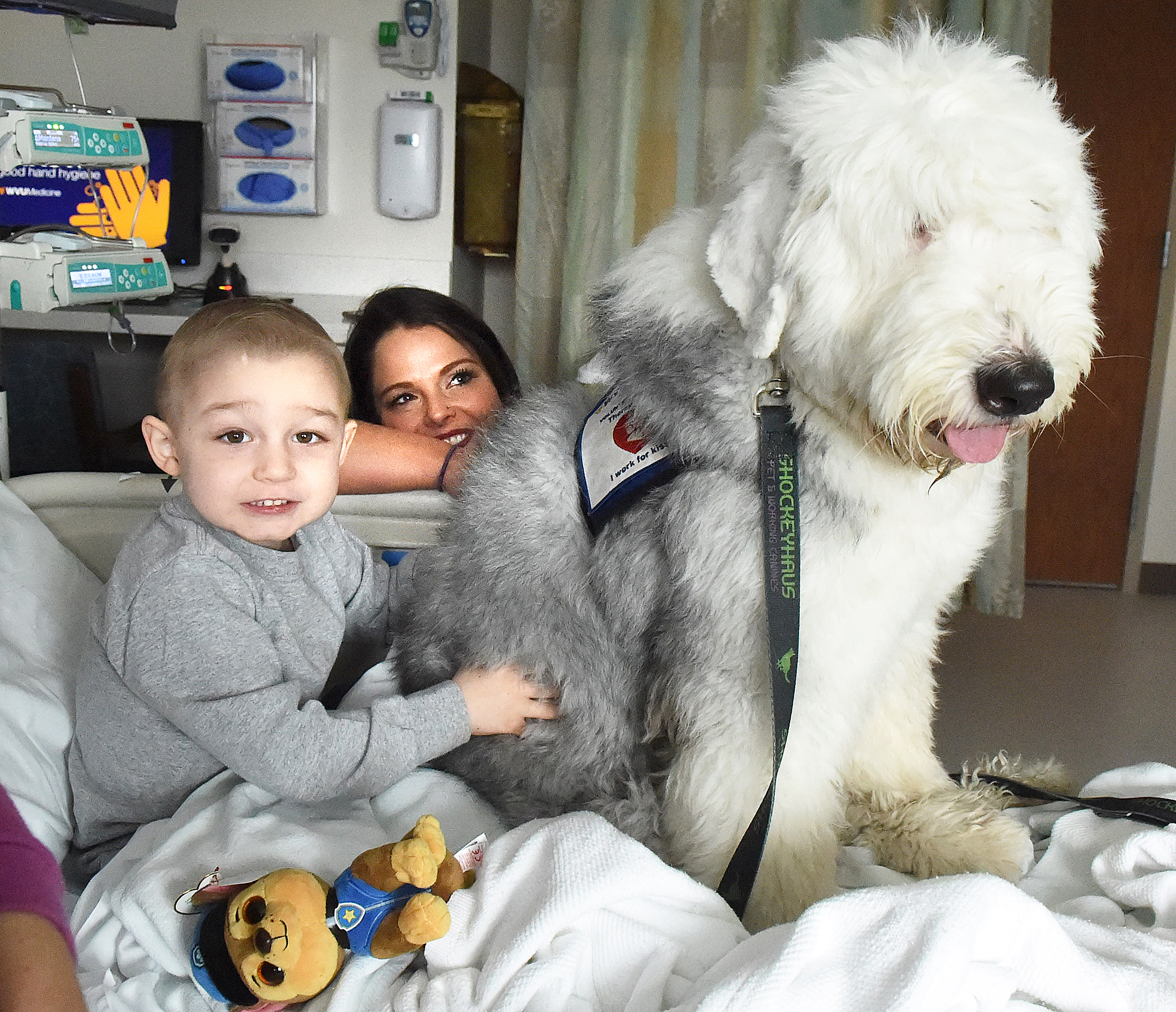Nurse Rachel Childers was in the midst of discussing a patient’s chart, in an authoritative tone with lots of multi-syllabic medical terms, when it happened.
Her voice shot up two octaves and suddenly became sing-song.
“Fluffy puppies!”
Pardon me?
“Fluffy puppies!”
Two words.
No punctuation.
Unbridled joy.
She’ll sing out that call every afternoon at the nurse’s station on 6 Southeast, WVU Medicine Children’s.
That’s where she does her work.
And that’s also where Gus does a lot of his work, as a certified therapy dog, making the rounds with his human, Maleah King.
Gus, who had just padded around the corner to prompt that term of enddearment, is indeed a fluffy puppy.
He’s a 4-year-old, 80-pound Old English sheepdog who first came into King’s life as a pet.
King, a program coordinator in WVU Medicine’s Department of Behavioral Medicine and Psychiatry, was taken with his gentleness and sweet nature.
She thought he might make a good therapy dog, and she was right.
Gus aced the training and was certified last February.
With his official WVU Hospitals photo badge so everyone knows who he is, Gus sees about 30 patients a day.
This fluffy puppy has an equally fluffy job description, as the chief dispenser of nuzzles, tail-wags and the occasional Scooby-Doo, cartoon lick, King said.
“He’s a charmer,” she said.
“He has this way of honing in on the sickest patients. It’s like he has radar.”
Gus, being Gus
In the elevator, Gus made his acquaintance with Gabriel Powell, standing eye-to-eye with the toddler.
Everyone else smiled over, offering pats and ear-scratches.
“Gus makes me feel good every time I see him,” Childers said.
That’s just as clinical as it is canine.
In fact, a team of dog-loving researchers in Japan in 2015 discovered that when you and a pup make eye contact, your brain elevates its levels of oxytocin.
Call oxytocin the “nurturing” hormone, if you like.
It generates the heart-swelling, feel-good rush of love in the magnitude of, say, what a mother feels when she cradles her newborn.
And there’s no tail wagging the dog, here.
The doggo’s oxytocin levels are rising right along with yours, in a continuous loop of
“him’s a good boy” adoration.
Counting Gus, there are about 15 certified therapy dogs enlisted by WVU Medicine.
Gus is a champion goofball away from the hospital, King said.
He’s a couch potato, who eats bananas, watches cartoons and takes lots of naps when he isn’t on the clock.
“He works hard,” she said. “I’ll give him that.”
In turn, he gave full attention to William Rodgers on Thursday, when he nosed his way into his room.
Rodgers, who is 3 and hails from Romney, has been a patient in Morgantown for a while, said his grandmother, Sharon Burroughs.
“Look at the big, friendly dog,” she said, as her grandson beamed.
Of belly rubs and happy baristas
Gus, meanwhile, plopped on the bed and promptly rolled over on his back.
“Uh-oh,” King said.
“Belly rub. We’re gonna be here a while, William.”
After the session, King and Gus retreated to the Starbucks in the lobby, where a certain therapy dog enjoyed his usual: A “Puppuccino” cup of whipped cream, just for him.
“There’s my guy,” said Caitlyn Matteo, the barista who makes it a point to fill his order whenever she and Gus are working the same shift.
TWEET @DominionPostWV




